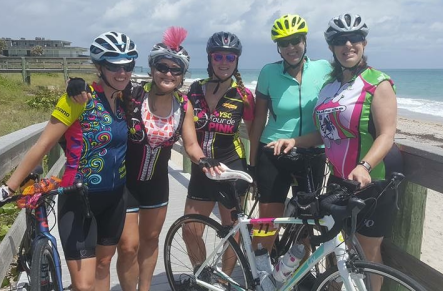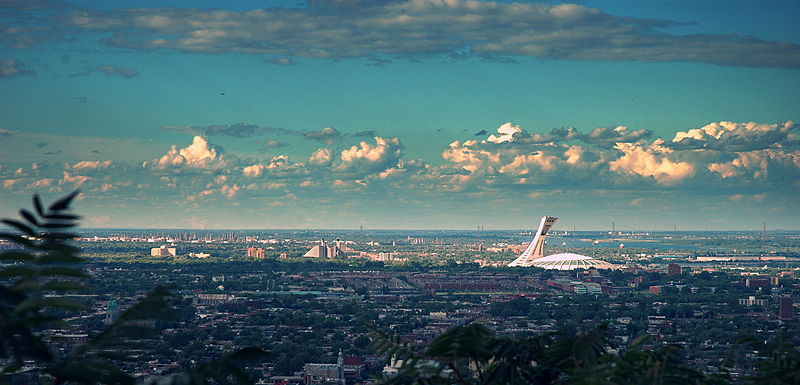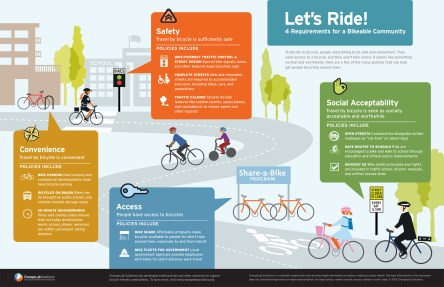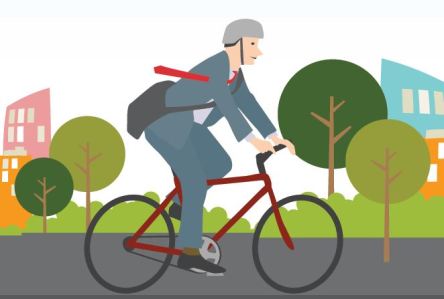Two Yardi colleagues on opposite sides of the country are participating in the YSC Tour de Pink cycling stage race this year to raise funds for breast cancer patients. The ride benefits Young Survival Coalition, a nonprofit dedicated to providing information, resources and support to young women affected by breast cancer. Both are part of the Global Solutions Investment Management Team, but are at very different stages in their Yardi journey. Susan Freehauf is an 18-year employee of Yardi and a Senior Director in Global Solutions. Marlyn (pronounced Marlene) Amoguis is a new Consultant in the same department who has been with Yardi just one month. Freehauf works remotely from Florida, while Amoguis is based out of the Yardi San Diego office. Both women have similar stories – they joined Yardi after previously working for a real estate company that was a Yardi client, and each has a strong background in fund/financial accounting, database management and software implementation. But one thing they didn’t have in common, until recently, was cycling. Marlyn is an experienced rider, who has been mountain and road cycling for years and participated in last year’s Tour de Pink in California with a group from her San Diego cycling club. But Susan had never bicycled for fitness until Marlyn told her about the Tour de Pink and what a rewarding and fun experience the ride had been when she took part in 2016. Each rider must raise $2500 for the non-profit in order to participate in the 200 mile ride over three days. Shorter distance options are also offered. “Last year I did not know what to expect, and I had a very positive experience. Many of my fellow riders were from the health care industry and were very genuine, caring people....
Best Burbs for Bikes
Minneapolis + Montreal
What do Minneapolis and Montréal have in common? Other than harsh winters, a serious case of love for bikes, say the people at Copenhagenize Design Company, an urban design consultancy from the land of bikeability – Copenhagen, of course. According to the 2015 edition of the Copenhagenize Design Company Index of the most bike-friendly cities in the world, Minneapolis and Montréal are the only two North American cities that placed into the Top 20 bike friendliest cities in the world. Buenos Aires also made it to the top 20 to represent South America, while the remaining 17 spots were snagged by European cities such as Copenhagen, Amsterdam, Barcelona, Bordeaux, Paris and Vienna. Beyond the bikelane Copenhagenize put together a list 122 global cities with metro populations of over 600,000 (or significant political and regional importance) that are putting serious effort into reestablishing biking as a feasible, accepted and practical form of transport. As such, selected cities are given scores from 0 to 4 in 13 categories, considered essential for a truly bike-friendly city: advocacy for biking, pervasiveness of facilities (bike racks, stair ramps, space allotment on public transport, etc.) bicycle culture within a city or its relegation to subcultures cycling infrastructure perception of safety by cyclists political involvement social acceptance from drivers and the community at large traffic calming (special biking zones, lower speed limits, priority for pedestrians and cyclists over cars) gender split modal share of residents using bikes as a mode of transportation instead of cars or mass transit modal share growth since 2006 (considered the year urban cycling started gaining momentum) Minneapolis Newcomer Minneapolis is the only US city on the 2015 Copenhagenize Index, and a welcome surprise, after the US’ notable absence from the previous index, released in 2013. Minneapolis boasts 200 miles of recreational bike lanes winding through the city, of which 92 miles are off-street bike paths. Minneapolis also has the second-highest number of bicycle commuters of the larger US cities, surpassed only by Portland. The city is so bike-friendly that the league of American Bicyclists rewarded Minneapolis with the Gold Level Bicycle Friendly Community Award. Minneapolis even bikes in the winter! If you’re only visiting the larger Twin City or don’t want to shell out on a bike yet, affordable rented bikes are available through the city’s affordable Nice Ride bike sharing network. A 30-day pass will only set you back $15, while a one-year membership costs a meager $65 – that’s just 30 cents a day. Want to live in the most bike-friendly city in the US? Check out LPM Apartments (pictured at left) in Central Minneapolis, a 354-unit LEED Silver-certified high rise in the Loring Park neighborhood. Owned by Magellan Development Group and managed by Magellan Property Management, LPM came online in 2014 offering downtown Minneapolis views. The 31-story apartment community boasts 40,000 square feet of amenities that include a bicycle shop and bike storage of course. Other swanky amenities include two pools, two spas, outdoor yoga area, guest suite, landscaped deck, and an indoor dog play room with lounge and dog wash area. Montréal Canada’s second largest city has been part of the Copenhagenize Top 20 bike-friendly cities since its first edition in 2015. Although it has since slipped from the eighth position to number 20, the city of a hundred steeples is holding on to its top 20 status. Montréal boasts 383 miles of bikeways, while the greater Montréal area features a jaw-dropping 1,100 miles. In fact, Montréal is so in love with biking, there’s even a dedicated street style blog featuring exclusively biking Montréalers. Bike Ride on the Lachine Canal, Montreal – video by Tourisme Montréal Want to enjoy Montréal’s cool biking culture? Check out the CVL Group’s Place Kingsley Appartements and Parc Kildare Appartements in Côte Saint-Luc. With Montréal’s extensive metro bike lane network you can bike downtown or to the nearest mass transit station. Place...
Bring on Bikeability
Creating cycle-savvy cities
American cities are changing for the better. More pedestrian-friendly cities have popped up in the last decade promoting cleaner air, less traffic, and healthier residents. The option for walking and biking tops renters’ must-have lists and neighborhoods that don’t adapt to this new lifestyle are losing out. Is your property in a bikeable community? What makes a bikeable community? This infographic from Good.Is illustrates the four traits needed for bikeability. If your community has all of these features, then you’re on the right track! You’ll attract Millennials and Baby Boomers alike to your property. If not, you have the power to promote change. But why should you bother? Demand is the largest factor; renters want pedestrian-friendly locations. When renters hear pedestrian-friendly, they also hear: Cleaner air Less traffic Less time in traffic means less stress and more time with family Outdoor fitness options Easier access to shops, services, and parks…and fewer ugly parking decks Money saved! No car, car insurance, or outlandish gas budgets required Money saved means more cash for personal interests Neighborhoods that aren’t bikeable or walkable don’t offer these advantages. They will plummet to the bottom of apartment seekers’ lists when compared to communities that do. To start, you’ll need to rally and unify local residents through education. You will want to connect with organizations such as America Bikes, which advocates for bike and pedestrian initiatives under the federal transportation bill. They can help you with funding, case studies, feasibility studies, and other reports that you will need to inform residents and impress city officials. Organizations such as The League of American Bicyclists and Rails to Trails Conservancy are excellent resources for educational materials and ideas to put existing infrastructure to work. Many offer to send representatives to your community to...
Changing Lifestyles
More biking + walking
People have become increasingly preoccupied with well-being and seek healthier alternatives to everyday activities. Collaborative consumption, sustainable transportation choices, social connectivity and affordability have become guiding principles for a large part of the American population. The benefits of adopting such principles are indeed great and may include lowering carbon footprint by sharing transportation – whether bike or car sharing, or turning to mass transit for daily commutes, saving costs and resources by choosing collaborative workspaces, cutting down expenses by borrowing and recycling things, and increasing social gratification by engaging in such programs as crowdfunding and product service systems (PPS). This massive shift in consumer mindset has touched everything, from product preferences to lifestyle habits and housing choices. There is a growing demand for mixed-use communities and walkable environments in urban cores, particularly because working professionals and even empty nesters recognize de benefits of living more sustainably. Proximity to jobs, retail and entertainment options, access to public transportation and shared infrastructure systems, eco-friendly amenities and green spaces have become powerful incentives for attracting and retaining residents. As sustainability has become a word that sells and transportation is a major concern for most renters, multifamily operators are providing alternative options for getting around while allowing residents to be good stewards of the environment. Bike sharing has now evolved into a well-developed, high-tech amenity that provides real value to tenants engaged in daily commutes. Zagster, a company that provides turnkey bike sharing programs, is developing a national footprint of bike sharing programs in partnership with multi-family companies, businesses, hotel chains and universities, all of whom are looking to provide value added services and benefits to residents, guests or employees. More recently, the company teamed with Novare Group, a leading developer of cutting-edge, mixed-use high-rise communities in southeastern...
City Cycling
Insight from John Pucher
When given the choice to drive, walk, take the bus or ride a bicycle, which do you choose? Urban transit expert John Pucher is trying to push more people out the door on their own two feet – and pedals. Given that 41 percent of trips taken in the U.S. amount to less than 2 miles of travel each way, cycling as a daily transportation method should be easily viable (it’s fun, healthy and very green), but adopting such habits is hard for many of us (we’re sedentary and addicted to our cars). In no U.S. city does cycling yet edge into double digit percentages of trips taken. Pucher, a professor of urban planning at Rutgers University, focuses his attention on how humans get around hopes that better planning efforts and increased advocacy will change that. His latest book, “City Cycling,” co-authored with Ralph Buehler of Virginia Tech, is an examination of urban cycling trends around the world. He spoke recently in support of the text in Santa Barbara, Calif. For multifamily housing developers and managers, the question of how people get from place to place in their communities is an important one. If residents choose cycling, walking or public transit over a private vehicle, the shift can be beneficial for developers. It may eventually even mean they can provide less parking – as long as there is designated space for bike storage. For residents adopting a bike, transit and pedestrian-heavy lifestyle, the most attractive community locations will be closer to the city core. It’s no surprise that European cities, especially Amsterdam and Copenhagen, top most lists of places where big chunks – nearly 30 percent for Copenhagen – of trips are taken on bikes. Denmark’s largest city is working to raise that number...





